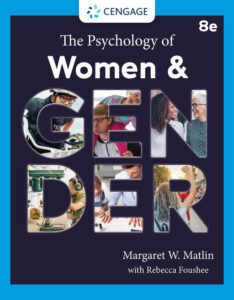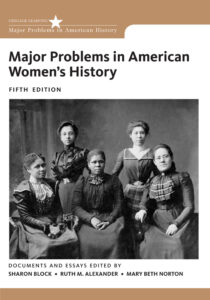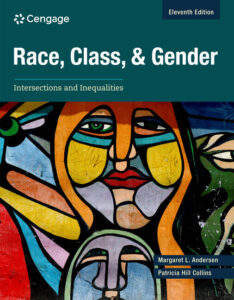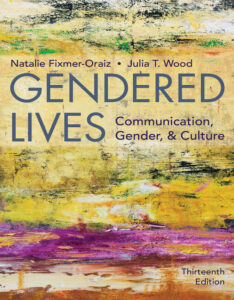March is Women’s History Month — an excellent opportunity for educators to broaden students’ awareness of the many contributions women have made throughout time. It’s a chance to teach students to think critically about the common historical (and modern) interpretations of women’s roles.
This year’s theme for Women’s History Month is “Women Who Advocate for Equity, Diversity and Inclusion.” According to The National Women’s History Alliance, “the theme recognizes women throughout the country who understand that, for a positive future, we need to eliminate bias and discrimination entirely from our lives and institutions.”
If you’re searching for resources to use in class for Women’s History Month 2024, and beyond, here are a few titles to keep in mind.
4 Cengage titles for teaching women’s history and gender
“Major Problems in American Women’s History,” 8e
“Major Problems in American Women’s History,” 8e by authors Sharon Block, Ruth M. Alexander and Mary Beth Norton is the leading reader for courses on the history of American women, covering the subject’s entire chronological span. While attentive to the roles of women and the details of women’s lives, the authors are especially concerned with issues of historical interpretation and historiography.
“Race, Class, and Gender: Intersections and Inequalities,” 11e
“Race, Class, and Gender: Intersections and Inequalities,” 11e by Margaret L. Andersen, Patricia Hill Collins is a collection of over 50 writings that demonstrate how the complex intersections of people’s race, class, gender and sexuality shapes their experiences and who they become as individuals. It includes, for example, “Refugees, Race, and Gender: The Multiple Discrimination against Refugee Women” and “Our Mothers’ Grief: Racial-Ethnic Women and the Maintenance of Families.”
“The Psychology of Women and Gender,” 8e

“The Psychology of Women and Gender,” 8e by Margaret W. Matlin and Rebecca D. Foushée introduces the psychology behind women and gender using an engaging narrative and the latest research. It covers four general themes: (1) Psychological gender differences are typically small and inconsistent (2) People react differently to men and women (3) Women are less visible than men in many important areas (4) Women vary widely from one another.
In the text, the authors examine topics that are central to women’s lives but are often not addressed by other authors. Complete chapters discuss childhood, adolescence, older adulthood, love relationships, motherhood, physical and mental health. Expanded coverage also explores social class, ethnic and gender diversity, pregnancy and retirement for women.
“Gendered Lives,” 13e
“Gendered Lives,” 13e by Julia T. Wood and Natalie Fixmer-Oraiz draws from the latest theories, research and pragmatic information. The authors demonstrate the multiple — and often interactive — ways that a person’s views of masculinity and femininity are shaped within contemporary culture. The text uses a conversational, first-person writing style and offers balanced coverage of different sexes, genders and sexual orientations. The chapter, “The Rhetorical Shaping of Gender: Competing Images of Women” explores multiple waves of women’s movements and contemporary feminisms.
While Women’s History Month is celebrated every March, the important impact women have made and continue to make can be recognized and taught every day.




